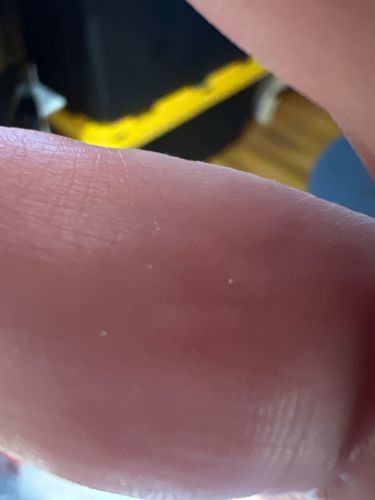Mites (general, possibly dust mites or oribatid mites)
Scientific Name: Acarina (subclass, specific species cannot be determined from image)
Order & Family: Acari (Order) / Acaridae (e.g., for dust mites), Oribatida (e.g., for soil mites)
Size: Typically microscopic to very small, ranging from 0.1mm to 2mm in length.

Natural Habitat
Widely varied, depending on species. Dust mites live in household dust, feeding on dead skin cells. Oribatid mites live in soil, leaf litter, and moss.
Diet & Feeding
Highly diverse, depending on species. Can be detritivores (dead skin, organic matter), fungivores, herbivores, or predators of other small arthropods.
Behavior Patterns
Mites are generally slow-moving. Dust mites thrive in warm, humid environments. Oribatid mites are important decomposers in soil ecosystems. Reproduction involves eggs, several nymphal stages, and adults.
Risks & Benefits
Potential risks: Dust mites can cause allergies, asthma, and skin irritations in sensitive individuals. Some parasitic mites can infest plants, animals, or humans. Potential benefits: Many mites are beneficial decomposers in ecosystems, breaking down organic matter and contributing to soil health. Predatory mites can be used as biological control agents against pest insects and other mites.
Identified on: 10/31/2025